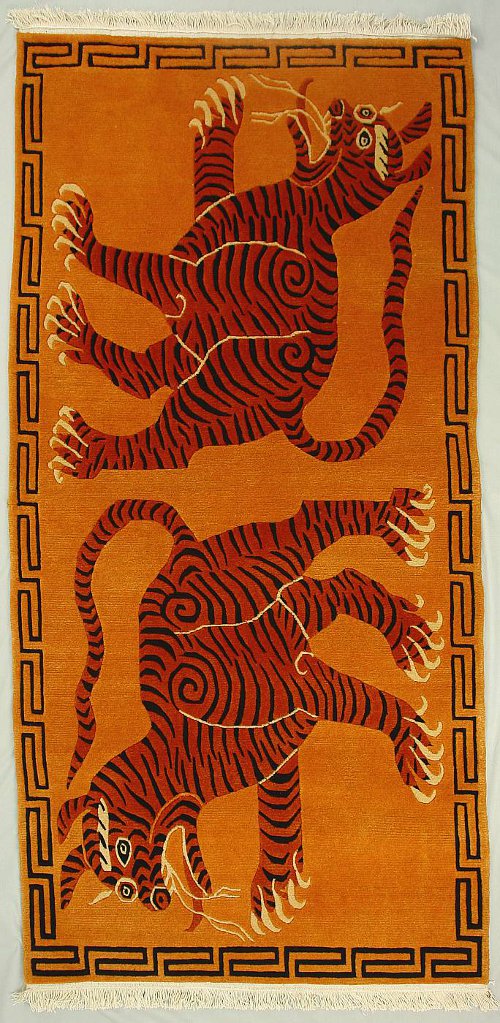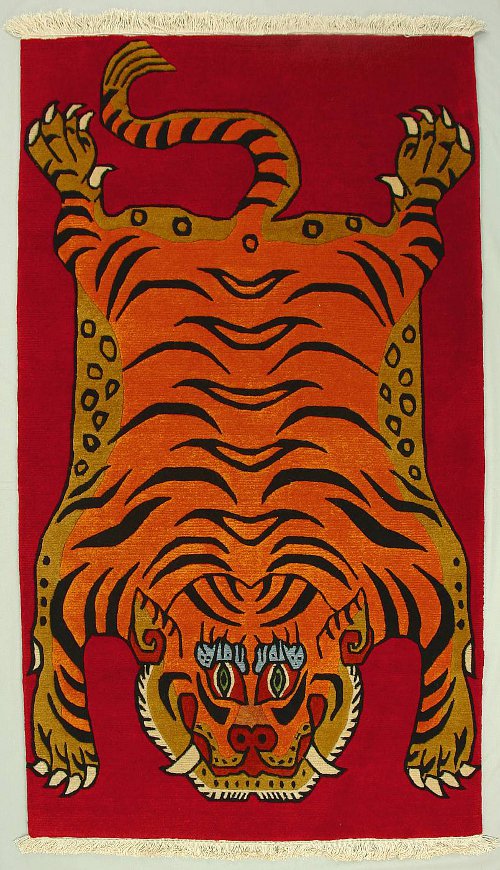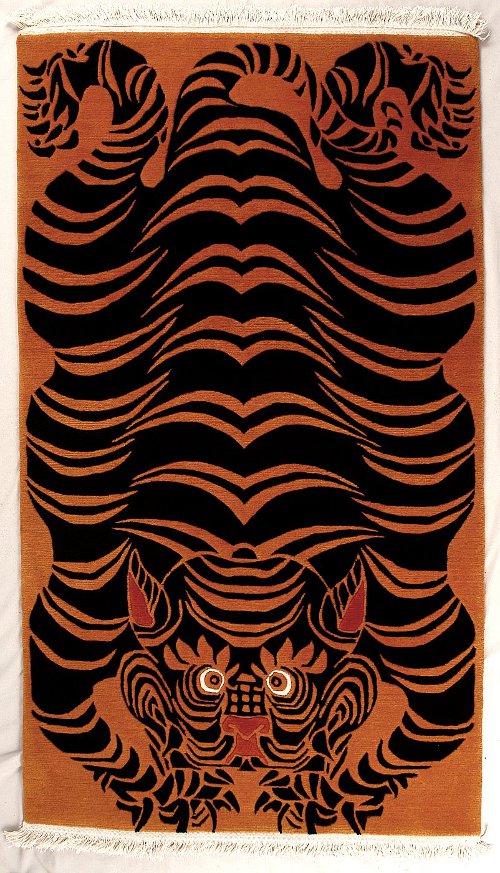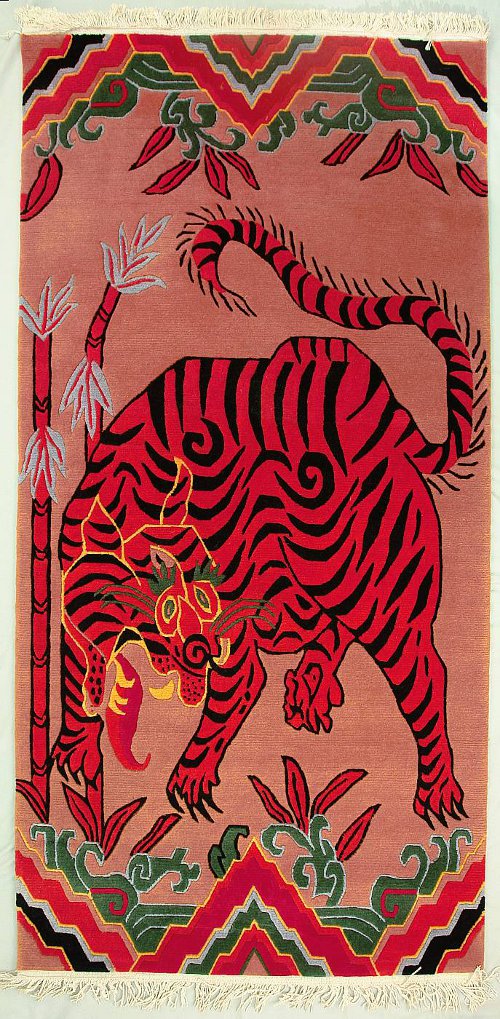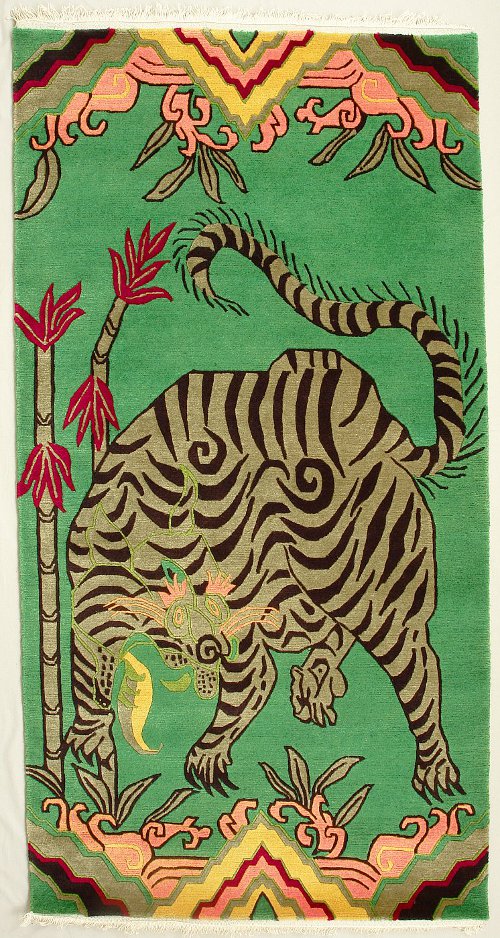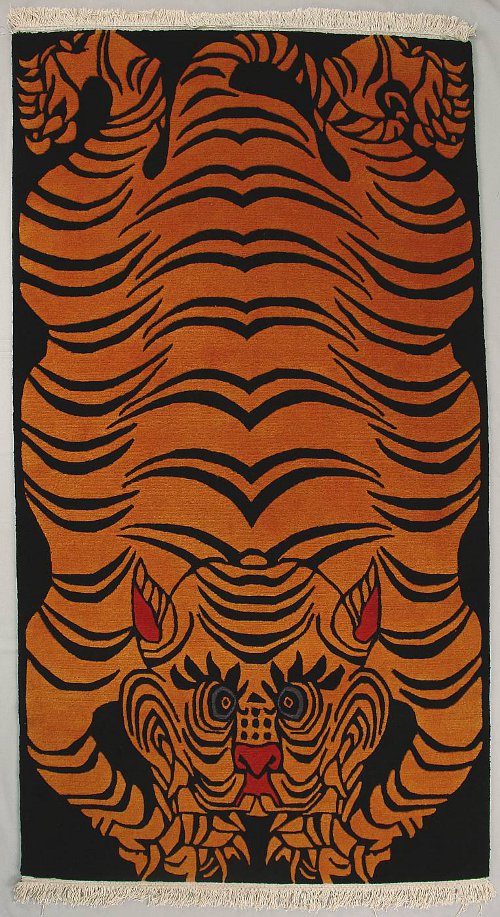| < Prev | Next > |
|---|
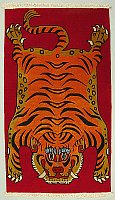 Among traditional Tibetan carpets the so-called tiger rugs are a unique and fascinating genre of its own. The designs of these carpets show one or more tigers in figural and sometimes even in abstract compositions.
Among traditional Tibetan carpets the so-called tiger rugs are a unique and fascinating genre of its own. The designs of these carpets show one or more tigers in figural and sometimes even in abstract compositions.
This is a general informative article about Tibetan tiger rugs. If you are searching for a gallery of tiger rugs that are for purchase, please take a look at our Tibetan rug shop.
Tiger Rugs from the Roof of the World
The origins of the tiger rug designs are a bit in the mist like the origins of Tibetan carpet making in general. Mimi Lipton, the editor of the book "The Tiger Rugs of Tibet" says that they were not to be seen outside Tibet until 1979 when the first one was brought to the U.S.A. and bought by the Newark Museum. The theory is that tiger rug designs were reserved for the cloisters and the high nobility.
Tibet - the Forbidden Country
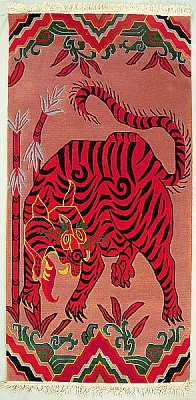 Tibet had not been accessible for foreigners for many centuries by the will of their rulers and by the harsh conditions of climate, altitude and by the lack of roads. In the early 20th century and shortly after world war II a few Westerners like Heinrich Harrer made their way into Tibet and could study the forbidden country over several years.
Tibet had not been accessible for foreigners for many centuries by the will of their rulers and by the harsh conditions of climate, altitude and by the lack of roads. In the early 20th century and shortly after world war II a few Westerners like Heinrich Harrer made their way into Tibet and could study the forbidden country over several years.
In 1959 the brutal occupation of Tibet by the People's Liberation Army of Mao Zedong forced ten thousands of Tibetans and His Holiness the Dalai Lama to flee their own country and seek for asylum in Nepal and Northern India. The Tibetan refugees brought with them the knowledge of carpet making and many established a living by weaving carpets.
The tiger designs can be grouped into several basic categories:
- Depiction of a single tiger.
- A pair of two tigers.
- Tiger pelts with one head or one head at both ends.
- Abstract and semi-abstract designs of tiger pelts.
Tigers in Tibetan Culture
Tiger skins are not unusual in Tibetan paintings. Tibetan thangkas (religious scroll paintings) show wrathful deities clad in tiger skins. The images of tigers and tiger skins are believed to give strength and express the power of the owner. In old photographs one can see Tibetan or Mongolian high officials sitting on tiger design rugs. Carpets with tiger stripes can be seen at ritual dance performances of Tibetan festivities.
Origins of Tibetan Carpets
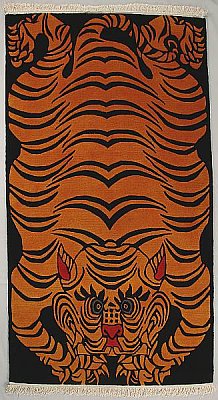 Only a few decades ago scholars thought that the knowledge of carpet making in Tibet is not older than early nineteenth century. The reason for this assumption was the lack of old carpets older than 200 years. Today most scientists think that the tradition of nomad-made carpets in Tibet must be at least a thousand years.
Only a few decades ago scholars thought that the knowledge of carpet making in Tibet is not older than early nineteenth century. The reason for this assumption was the lack of old carpets older than 200 years. Today most scientists think that the tradition of nomad-made carpets in Tibet must be at least a thousand years.
The Tibetans use a special knot that is not used anywhere else. If the Tibetan people had adopted the knowledge of knotting carpets from other areas, presumably they would have adopted the same technique.
The Tiger Rugs of artelino
The tiger rugs offered by artelino are created entirely after old patterns that we commissioned in January of 2008. They are created in a manufacture in the Kathmandu valley. I know the owner personally since the early 1980s. The carpet production is run under ethical conditions that are outstanding for a country like Nepal. Of course, there is no child labor. My friend even operates a private elementary school and a nursery school out of his personal funds.
It took about 10 months before our commissioned carpets were finished. The results exceeded our most optimistic expectations. Although we had fixed the designs after old carpet designs, the Tibetan and Nepalese artisans and workers have managed more than just copies. These carpets are charming works with fascinating color combination and individual touches and variations of small details within the framework of traditional designs.
Gallery of Tibetan Tiger Rugs
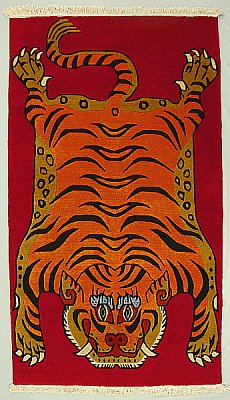
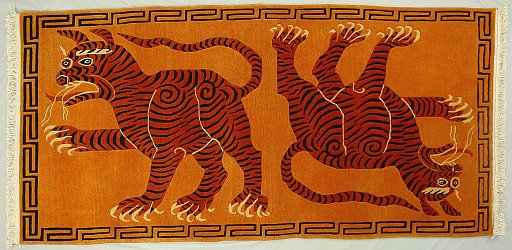
Literature
I discovered a book in Kathmandu, Nepal, that covers exclusively the subject of Tibetan tiger rugs. It was published at the occasion of an exhibition by Hayward Gallery in London in 1988. The book comes with 108 color plates and 50 illustrations. Edited and with an introduction by Mimi Lipton and contributions by Cyril Barrett, Jim and Barbara Ford, Philip Goldman and Tom Phillips. ISBN: 1 85332 025 0.
Dieter Wanczura




